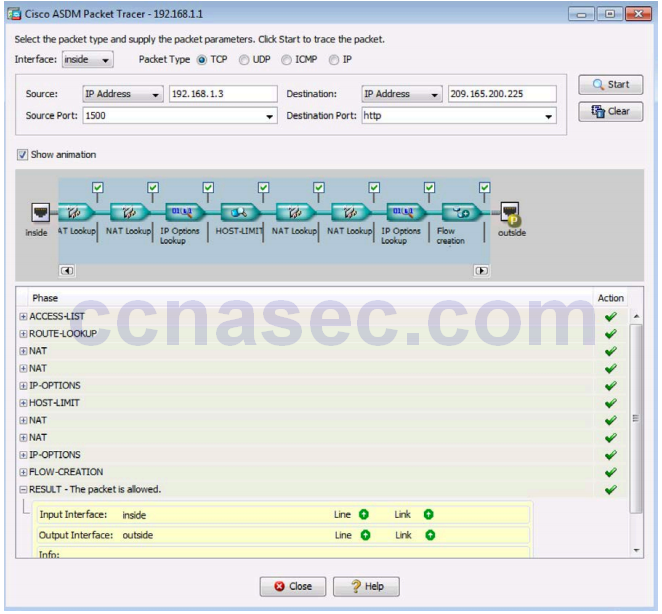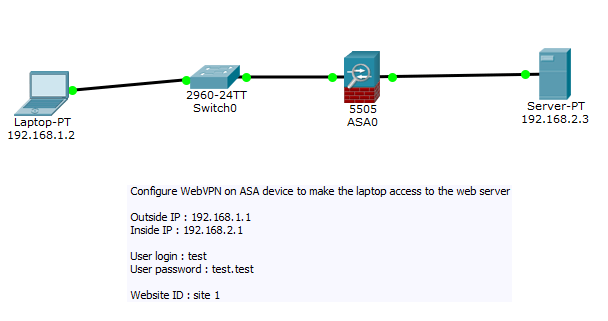

- #ASA 5505 CISCO PACKET TRACER STEP BY STEP CONFIGURATION HOW TO#
- #ASA 5505 CISCO PACKET TRACER STEP BY STEP CONFIGURATION UPDATE#
In the following figure, you can see the routes learned by the RIP protocol on Router3.Once you have configured RIP routing protocol on each router, wait for a few seconds (let complete the convergence process), and then execute the show ip route command on any router to show the routing information.Router3(config)#router rip Router3(config-router)#network 150.150.150.0 On Router3, execute the following commands to configure RIP routing.On Router2, execute the following commands to configure RIP routing.On Router1, execute the following commands to configure RIP routing.In the later section, we will also configure RIPv2 routing. Once you have configured the appropriate IP addresses on each device, perform the following steps to configure RIP routing. The following figure shows the IP configuration of Router1.
#ASA 5505 CISCO PACKET TRACER STEP BY STEP CONFIGURATION HOW TO#
If you stuck in configuring IP addresses, click here to know how to configure IP address or you can refer the following example.įor example, to configure TCP/IP addresses on Router1, execute the following commands: Router1(config)#interface fa0/1 We assume that you know how to configure IP addresses. If you are using a simulator, such as Cisco Packet Tracer or GNS3, create the preceding topology and configure the devices as per the values mentioned in the following table.įirst of all, configure the IP addresses on each device. If you are using a simulator, such as Cisco Packet Tracer or GNS3, create the following topology and configure the IP addresses as mentioned in the topology.

To demonstrate how to configure RIP in Cisco Packet Tracer, we will use the following network topology. The following table lists the various types of timers used by the RIP protocol to optimize the network performance. Routing protocols use timers to optimize the network performance.
#ASA 5505 CISCO PACKET TRACER STEP BY STEP CONFIGURATION UPDATE#
Hold-down timers: When the hold-down timers are set, routers ignore the routing update information for the set period of time.The router then passes this route out to the neighbor router, and the neighbor router removes the unreachable route from its routing table. Poison reverse: In this mechanism, a router marks a route (that is not accessible) as unreachable and set the hop count to 16.

Hop-count limit: Limiting the hop-count prevents routing loops from continuing indefinitely.Split horizon: In the split horizon, route information is not sent back out through the interface from which it was received.However, RIP protocol has some mechanisms that can be used to prevent the routing loops and maintain the network stability. Sometimes routing loops create a big issue on an RIP-based network. If you want to configure RIP protocol on your network, you have to be familiar with the routing loops. The following table lists the key differences between RIPv1 and RIPv2. RIPv2 provides more functionalities than RIPv1. However, RIPv2 is an enhanced version of RIPv1. The basic features, such as hops count and metric, of both the RIPv1 and RIPv2 protocols remain same. There are two versions of RIP protocols: RIP version 1 (RIPv1) and RIP version 2 (RIPv2). The Administrative Distance (AD) value of the RIP protocol is 120.It uses UDP broadcast packets to exchange routing information.It sends routing updates (entire routing table) after every 30 seconds and when the network changes.



 0 kommentar(er)
0 kommentar(er)
